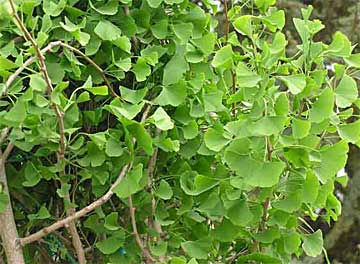By the 1980's a situation had developed in the Village of Oxford regarding the trees. Various groups and civic organizations had worked independently solving smaller needs, but not looking at the whole Village and its future. Back in the late 1800's North and South Washington and Albany Streets had a dense tree canopy formed of Elms and Maples. Now many of the Elms were destroyed by Dutch Elm Disease, and the Maples had either died or declined in health due to their environment. The Lions Club had a history of purchasing trees, and were responsible for plantings at the Oxford Library and at Mat Boname, M.D. Park. The pavilion and trees around the Oxford Municipal swimming pool were from the Oxford Rotary Club. The Oxford Garden Club sponsored an attempt to save the elms on LaFayette Park, and then replantings of trees there and on Fort Hill Park. They realized that in order to implement bigger, cohesive, and long-term changes, they needed to form a group that could be in charge of the various environmental and ecological challenges as well as coordinating the beautification efforts in the Village.
A meeting of the Village of Oxford Board of Trustees, under Bruce Small, was held in the old Village Hall (located at that time in the Navy Island Block). That was when the "Oxford Tree Committee" was created. The first sanctioned, five person committee members then chosen were: John Godfrey - Chairman; Anna Stark; David Emerson; Jack Lewis; and Paul Seehausen. It was an advisory committee to the Board of Trustees.
 |
The Ginkgo (Ginkgo biloba),
slow growing trees, are native to Southeast China, and
they have very deep roots that make them particularly drought
tolerant. They're also very adaptable and hardy. Their
fan shaped leaves are very unique and attractive (turning
a striking bright yellow in the fall); they create a dense
canopy with age. |
A study was done of the trees and shrubs, and general appearance
of the
parks-- Washington & LaFayette Parks in the Village, and Boname
Park on
East River Road-- the Village itself, as well as the village pool
area.
Problems were assessed, improvements were suggested, a budget was
allocated, and a plan was made.
One of the authorities on tree care/management consulted was, Jeffrey
Cook, of Cooks Tree Service, certified NYS
Arborists ISA Chapter members.
Jeffrey, his father, Leo, and his brother, Gary, are all certified NYS Arborist members of the International Society of Arboriculture (ISA) Chapter. This means that they have proven themselves by passing a comprehensive examination, developed by some of the nation's leading experts on tree care. Annually they must continue their education, and keep up-to-date on the latest techniques in Arboriculture, to maintain their certification.
 |
The Sunburst Golden Honey
Locusts (Gleditsia triacanthos f. inermis 'Sunburst') are
quick growing shade trees, but they're smaller than the
common Honey Locust. They have delicate fern-like leaves
with a unique light yellow color. This variety of Locust
produces fragrant flowers in the spring, is thornless,
podless, and withstands a wide range of conditions. |
The Cook family business, located in Vestal, NY, has been taking care of the trees in Oxford even before there was a Tree Board, so they were very familiar with the situation. One of the biggest concerns, according to Jeff Cook, was the fact that so many trees had been planted at the same time, 80 - 100 years ago, and are declining in health. Many are considered "hazardous", and have been or need to be removed. Perhaps if they knew then, what we know now, about the long term health of "street trees", they wouldn't have planted all the same species of tree in one area.
In 1988, under Mayor Janet Seehausen, work was completed on new
sidewalks, curbing, and street lamps were added too. It was also
the
first year that the (original) Tree Committee began Arbor Day
celebrations, which became an annual tradition in the Village.
They gave
away small trees, donated by the Norwich
Pharmacal Company.
The following year, 1989, marked the 100th anniversary of Arbor
Day, and
Oxford had a big celebration. Back then there was a pig roast and
a free
tree give-away. The festivities also included a "balloon launch":
balloons were marked with names and addresses, and the one that
was
returned from the furthest location, won a $50.00/U.S. Savings
Bond.
(The winner went as far as Delaware County.)
The first ten trees were planted in Oxford Village as part of the Arbor Day Celebration. They were carefully researched and selected for their attractive leaves, form, (mature growth) size, rooting habits, hardiness and adaptability. These substantial nursery stock specimens were: 4 Ginkgo and 6 Sunburst Golden Honey Locusts. They added to the beauty of the area around LaFayette Park, and were just the beginning of tree plantings to come.

